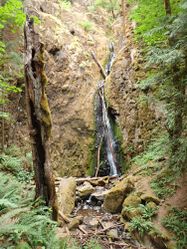Soda Creek
Jump to navigation
Jump to search
The exploration of this location has not yet been documented All information is unverified estimation | |||||||||||||||||||||||||||||||
|---|---|---|---|---|---|---|---|---|---|---|---|---|---|---|---|---|---|---|---|---|---|---|---|---|---|---|---|---|---|---|---|
| Rating: | |||||||||||||||||||||||||||||||
| | Raps:
Red Tape:No permit required Shuttle:Required 5min Vehicle:Passenger | ||||||||||||||||||||||||||||||
| Start: | |||||||||||||||||||||||||||||||
| Parking: | |||||||||||||||||||||||||||||||
| Shuttle: | |||||||||||||||||||||||||||||||
| Condition Reports: | |||||||||||||||||||||||||||||||
| Best season: | May-Jul
|
||||||||||||||||||||||||||||||
| Regions: | |||||||||||||||||||||||||||||||
Introduction[edit]
Oregon prospect. At least two major drops marked on USGS maps: Upper & Lower Soda Falls. This creek doesn't have much of a watershed and is likely best visited in late spring. Not to be confused with the "Soda Fork Creek" located 10mi further east.
Watershed: ~1.0mi^2.
Approach[edit]
Descent[edit]
- Upper Soda Falls
- Lower Soda Falls: 130ft multi-tier falls descending in multiple tiers through a tight narrows.
Exit[edit]
From Lower Soda Falls: a 0.5mi trail leads back to the parking area at Cascadia State Park.
